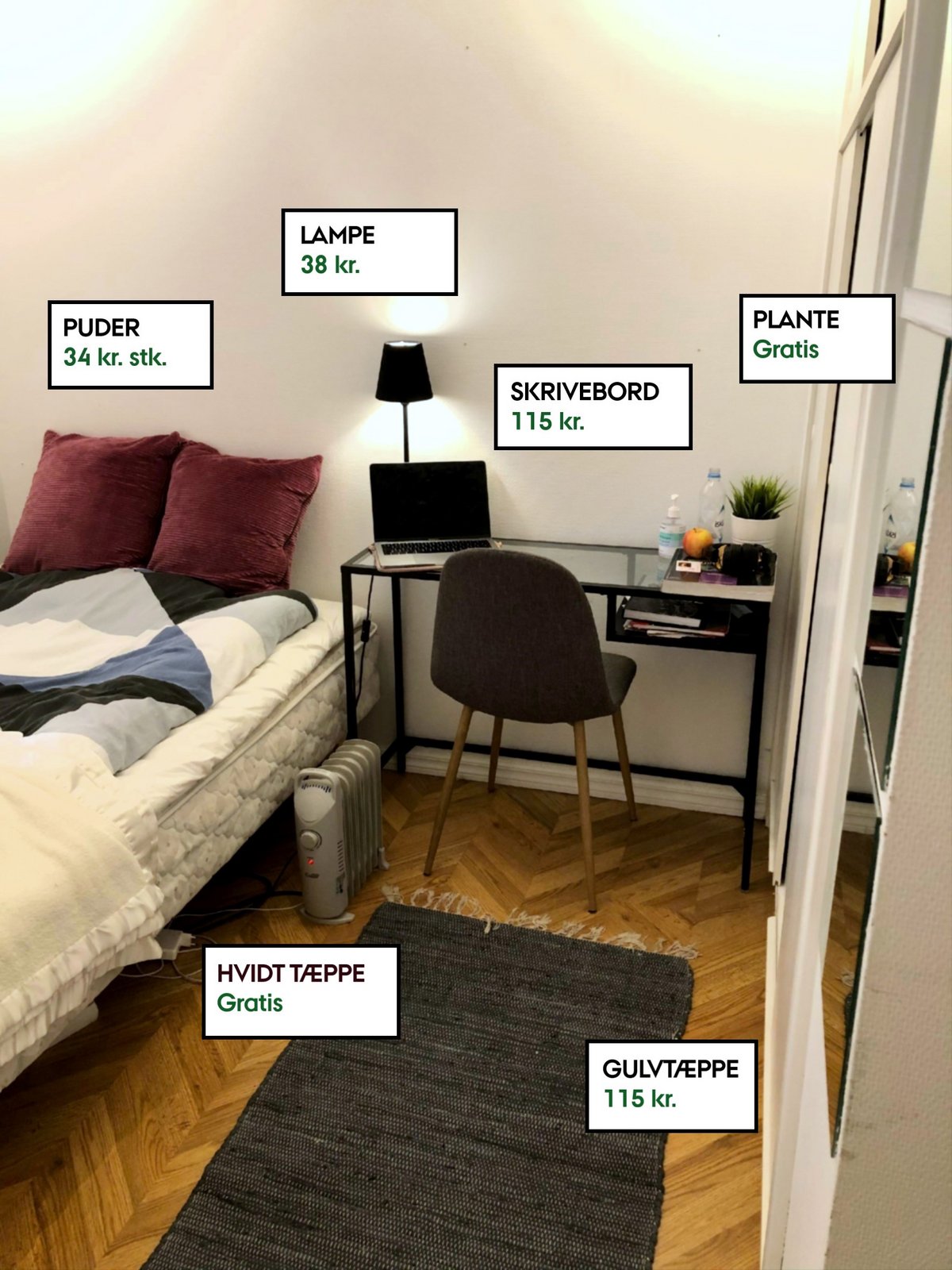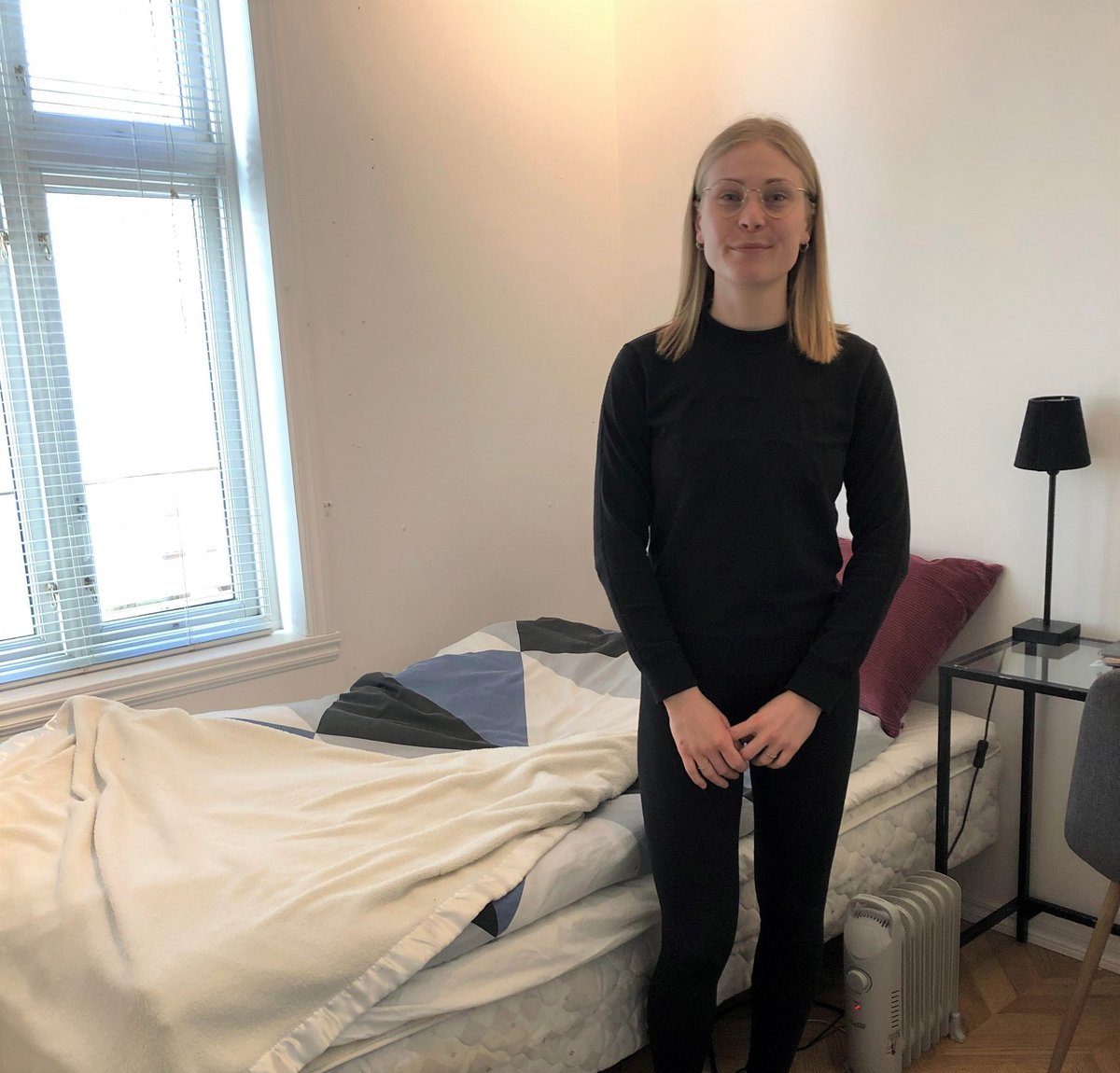Sofie has furnished her room with second-hand items
Sofie studies molecular medicine and is on exchange in Bergen, Norway, in spring 2022. She has chosen to furnish her room exclusively with items she has been able to source locally and second-hand.
The furniture manufacturing industry is a major source of carbon emissions, and therefore it is worth considering buying your furniture second-hand rather than new when settling into a new home – especially when you are studying abroad for a short period of time.
Homely environment
Creating a space that feels like a home away from home was important to Sofie. Her home in Bergen is a five-bedroom apartment which she shares with three other students. “When I first arrived, my room had only a bed, a lamp and a built-in closet. It was very minimalistic,” she says. “But now that I have decorated the space with stuff I’ve found second-hand, I think the room is cosy and I enjoy spending time here.”
Ikea, no thanks
For Sofie, economy is the main reason she is buying second-hand while living abroad. “It would have been easier to take a trip to Ikea and pick up everything I needed on day one of living here, but it would also have been more expensive, and I don’t want to spend a ton of money on decorating a room I will only be occupying for one semester,” she explains.
Interior decorating on a budget
For less than 500 DKK Sofie has furnished her space with a desk and a comfortable chair. Carpets, pillows and a table-lamp create a cosy atmosphere, and a mini-plant adds a bit of colour to the room. But where has she found all these items – second-hand – in an unfamiliar country?
When Sofie arrived in Bergen, she asked her Norwegian roommates where she might find second-hand items in the local area. Her roommates introduced her to a Norwegian online platform where individuals put up their used items for sale.
“Every day I was scrolling through ads, and when I stumbled on something I needed, I would jump on a bus and go collect the item from homes in and around Bergen.”
Bumpy bus ride
Transporting furniture by bus has mostly been hassle-free, but there are exceptions. A glass table – which Sofie uses as a desk – proved a challenge. “It was a fairly bumpy ride back home, and I was so worried that the glass would smash! I was literally lying across the table for the whole ride home,” she laughs.
Sofie's advice to exchange students interested in furnishing their 'home away from home' with second-hand items:
- • Ask a local where you can find second-hand items cheap or free (it can be a website, an app or a physical place).
- • Be patient. You probably won’t find everything you need in one afternoon. Allocate some time every day to your research and slowly gather the bits and pieces you need.
- • Buying second-hand creates experiences. Yes, travelling back and forth to collect items is time-consuming, but on the other hand, you get to see parts of your host city you may not have visited otherwise.
- • Remember that buying used items will save you money – and benefit the climate at the same time. It’s a win-win!

